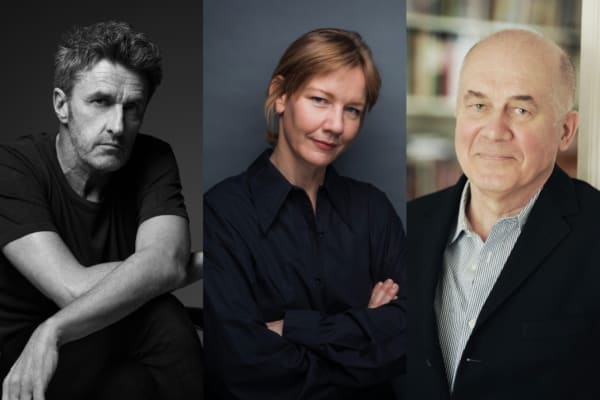How Bollywood, and digging holes, influenced the making of 'Kokuho'
Producer and developer Chieko Murata explains how Lee Sang-il's film, bowing at Cannes Directors' Fortnight, recreated several cities at Toei Kyoto Studios.
By Gabriella Geisinger 14 May 2025

“We needed to either dig a hole or build everything up. It’s easier to dig,” laughs Chieko Murata, developer and producer of director Lee Sang-il’s Kokuho, which bows at Cannes Directors' Fortnight. This simple necessity is what led the team to choose Toei’s Kyoto Studio as Kokuho’s home.
The film centres on Kikuo (played by Ryo Yoshizawa), who is taken under the wing of a renowned kabuki actor (Ken Watanabe) following the death of his yakuza-boss father.
The young man dedicates his life to the art of Kabuki alongside Shunsuke, (Ryusei Yokohama) the only son of the veteran actor
The story spans 50 years and multiple cities across Japan as the two men experience glory, downfall, scandal and triumph.
Intrinsically woven into the film are Kabuki theatres, which used elevators to move actors around — hence, the need to dig.
“The Toei studio [we used] is not a concrete ground, it’s basically earth – mud and sand – so we could dig the hole we needed," Murata explains.

Art director Yohei Taneda, known for Kill Bill, had several other things he needed – all readily accessible at the studio. In particular, “He needed artists to create the specific furniture for the opening Nagasaki scene,” Murata explains. “And Toei had those craftspeople.”
Distinctive to Nagasaki, due to the city’s history as being open to international trade, were Chinese-style round tables and specific chairs.
Filming on location in Nagasaki was never an option - “budget wise, we couldn’t,” Murata says, so being able to accurately create this design was key.
The production, which filmed March – May 2024, received funding from the Japanese ministry for economy, trade, and industry (METI, which runs the country's international production incentive) and the ministry for culture; the latter of which applied to the post-production, undertaken at Toei Tokyo Studios.

This drive towards authenticity informed other decisions, from music to set decorating. "At one point that we were discussing that maybe we should use music that everyone would know, or show that the Olympics are on in Tokyo on TV, so that people will know what decade it is.
“In the end, we decided to let the audience feel it through the ageing of the main characters,” she says. They also used costume design elements on the cast and 200+ extras (designed by Kumiko Ogawa) to signal change in era.
As the characters age they also move from city to city – Nagasaki, Osaka, Kyoto, and finally Tokyo, which also informed how they scouted for locations round their Kyoto studio base.
The movie's on-location production took place mostly in "small towns around Kyoto, Osaka, and Kobe, about 3 hours by car so all the crew and cast could stay in Kyoto,” Murata explains. In Kyoto they found "a house that still looked like the Showa era, untouched,” she says.
“The Kyoto film commission was very helpful,” Murata adds, “and the Japanese line producers know all the smaller-city commissions, so we could get more access and more resources.”
 The Nagasaki opening scene, filmed at Toei Kyoto Studios
The Nagasaki opening scene, filmed at Toei Kyoto Studios
This "Japanese way," Murata says, is similar to Europe in that "relationships matter." She advises anyone looking to film in Japan to partner with a local company.
International Appeal
Taking inspiration from Bollywood films, Kokuho’s nearly three hour runtime is broken up by Kabuki shows.
Their production was overseen by legendary Kabuki actor Ganjiro Nakamura the fourth. In addition to the choreography, dance, and costume, "he also oversaw how the alley backstage would look, how the crew do stuff in the backstage area," and the Kabuki rehearsal scenes.
Murata felt including the Kabuki scenes was key to bring the film to a global audience. “I am a big fan of Indian films, so I know there’s an international audience who can watch a long film – with dancing,” she laughs.
"[Personally] I've known the director for 20 years, and I was always hoping one of his films would go international. As a producer, I knew this film could go to Cannes."
Latest news & features
Featured profiles
Promote your services with Screen Global Production
Choose from three profile types - Basic, Silver and Gold
Create ProfileWe offer a range of display advertising opportunities.
Learn More


